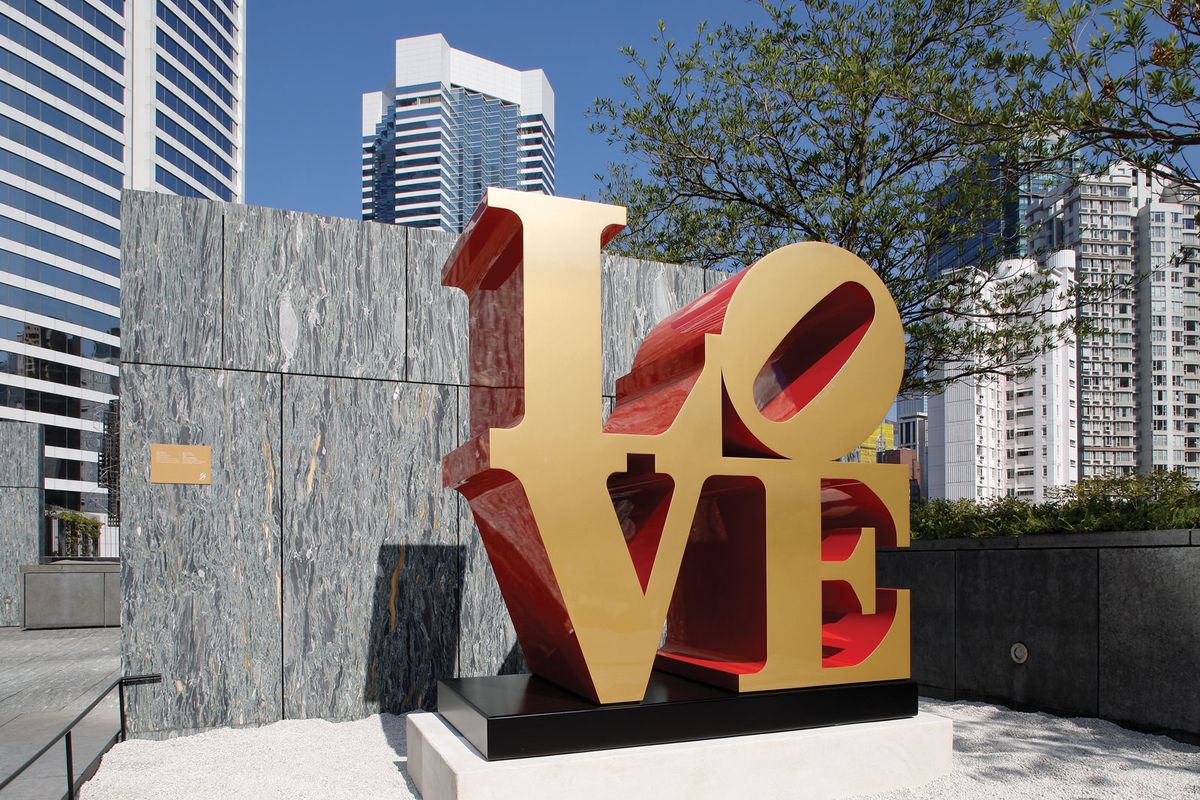LOVE Long: Robert Indiana and Asia
Asia Society Hong Kong Center, 9 Justice Drive, Admiralty
Until 15 July
Robert Indiana’s LOVE image—the four letters stacked in a square with the O at a tilt—has become a worldwide icon. The US master of hard-edge Pop Art has translated the design, which he conceived in 1965 as a Christmas card for New York’s Museum of Modern Art, into paintings, prints, postage stamps and public sculptures. A selection of Indiana’s LOVE works, including variations in Spanish and Chinese, are now on show at the Asia Society, alongside pieces by eight mostly Asian artists and collectives, including China’s Xu Bing and Japan’s Chim-Pom. They are united by an investigation of word and image—suggesting, the organisers say, that the language of art is universal.
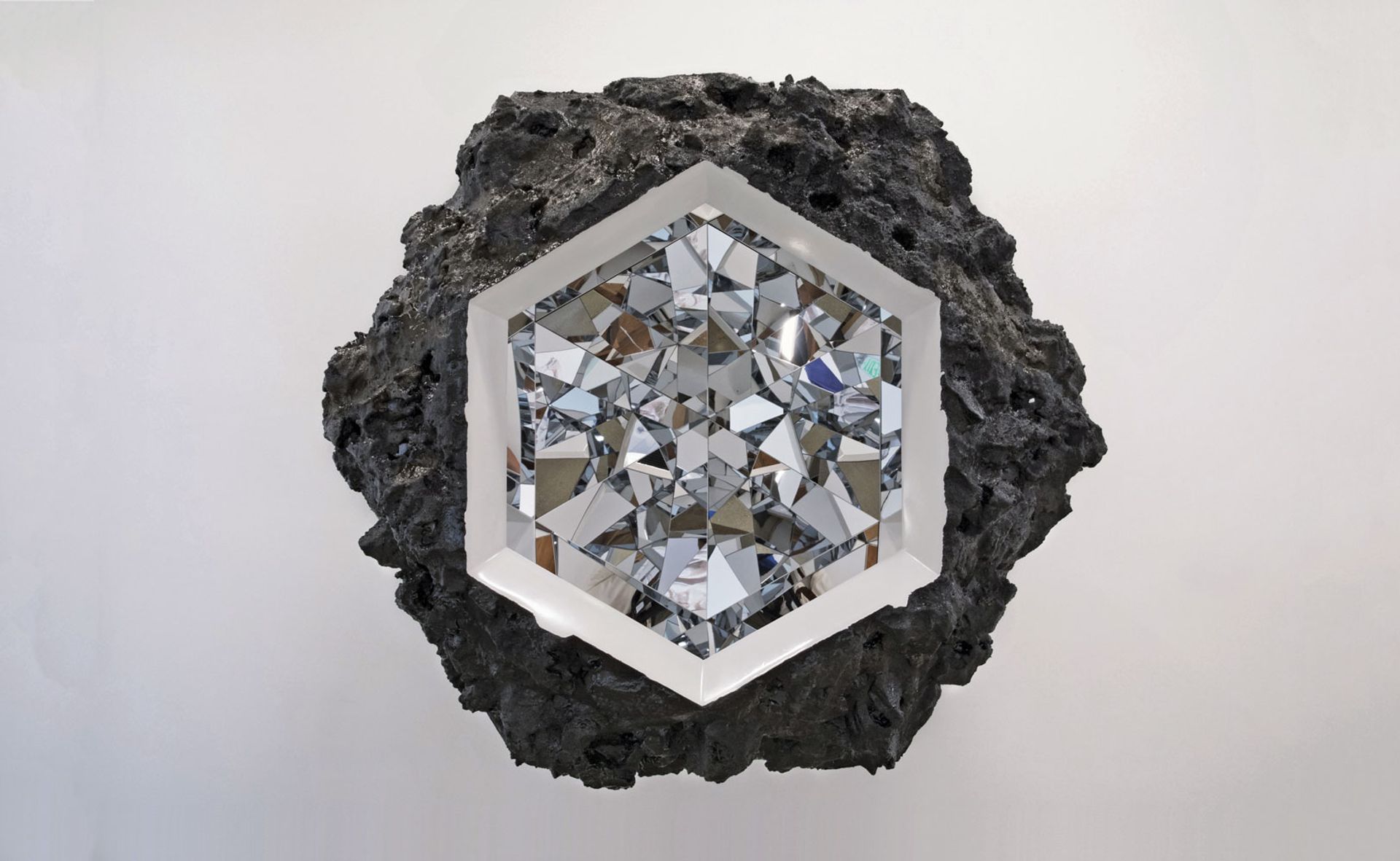
One of Aitken’s new sculptures, Inside Me, of mirror, aluminium, resin and concrete Courtesy the artist and 303 Gallery, New York and Massimo De Carlo, Milan/London/Hong Kong
Doug Aitken
Massimo De Carlo, 3F, Pedder Building, 12 Pedder Street, Central
27 March-19 May
For last year’s Desert X art festival, Doug Aitken created Mirage, a life-sized, mirrored ranch house that reflected and disappeared into the Coachella Valley. The selfie-friendly installation was a hit with the public but was never built to last, and was eventually dismantled in December. Beyond Instagram, the work lives on in a four-minute video by the US artist and film-maker, also called Mirage, which comes to Massimo De Carlo’s Hong Kong gallery this week. Mirrors are also a feature of Inside Me (2018), one of two large new sculptures by Aitken that will also be on display at the Pedder Building space.
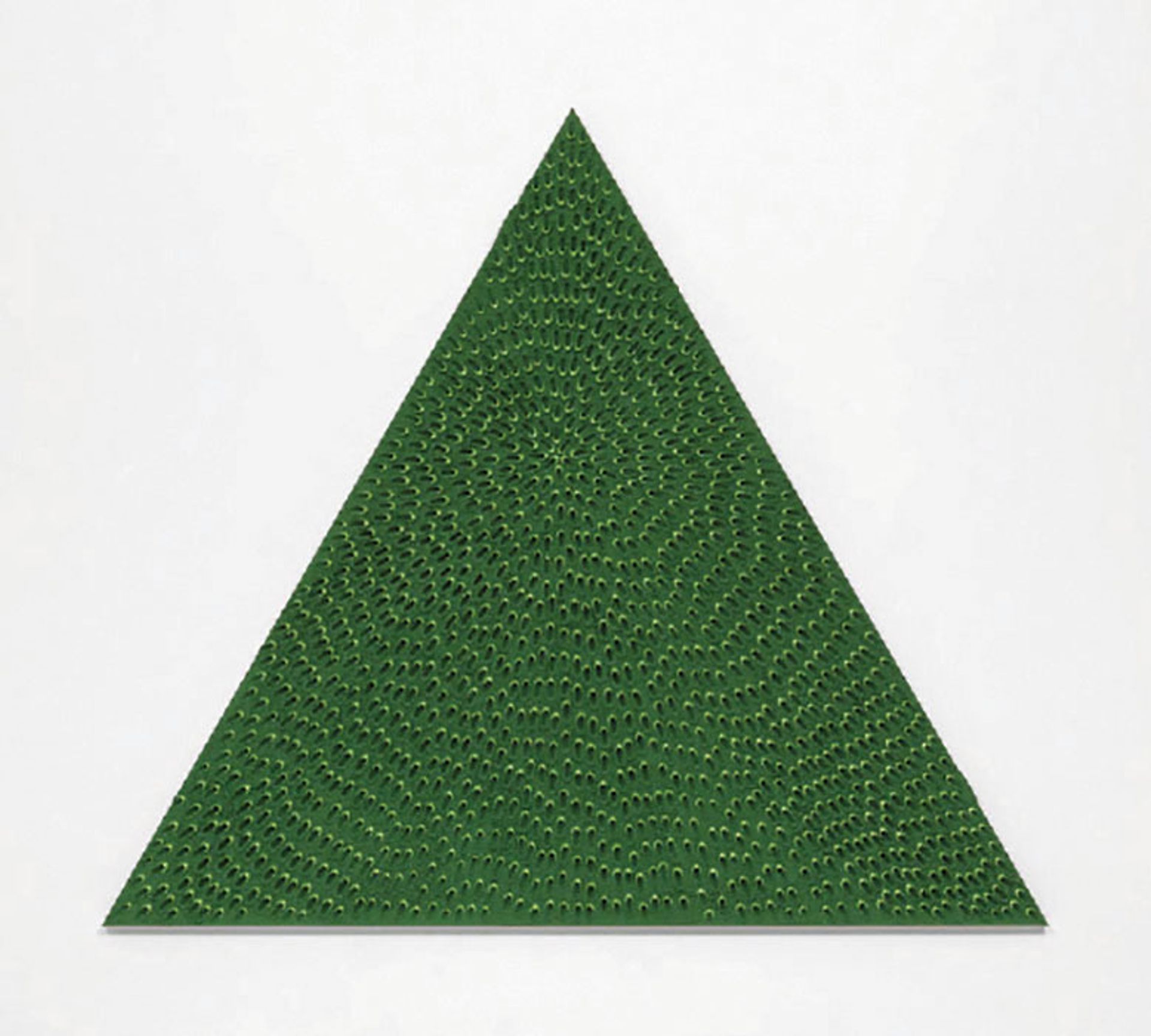
One of Guidi’s new works, The Priestess (Green and Light Green MT, Green Sand SF #1T, Green Ground) Jennifer Guidi
Jennifer Guidi: Heliocentric
Gagosian, 7th Floor, Pedder Building, 12 Pedder Street, Central
Until 12 May
On the heels of her first solo museum show, at Villa Croce in Genoa last summer, the rising West Coast painter Jennifer Guidi is making her Asian solo exhibition debut at Hong Kong’s Gagosian gallery. The show of 14 new works, including her first triangular canvases, reveals Guidi’s meticulous, meditative technique. Using a wooden dowel, the artist impresses hundreds of radiating marks on to a thick mixture of oil paint and sand. The luminously coloured results evoke the hazy light and coastal landscape of her native California, as well as her artistic predecessors in the region—the Light and Space minimalists.
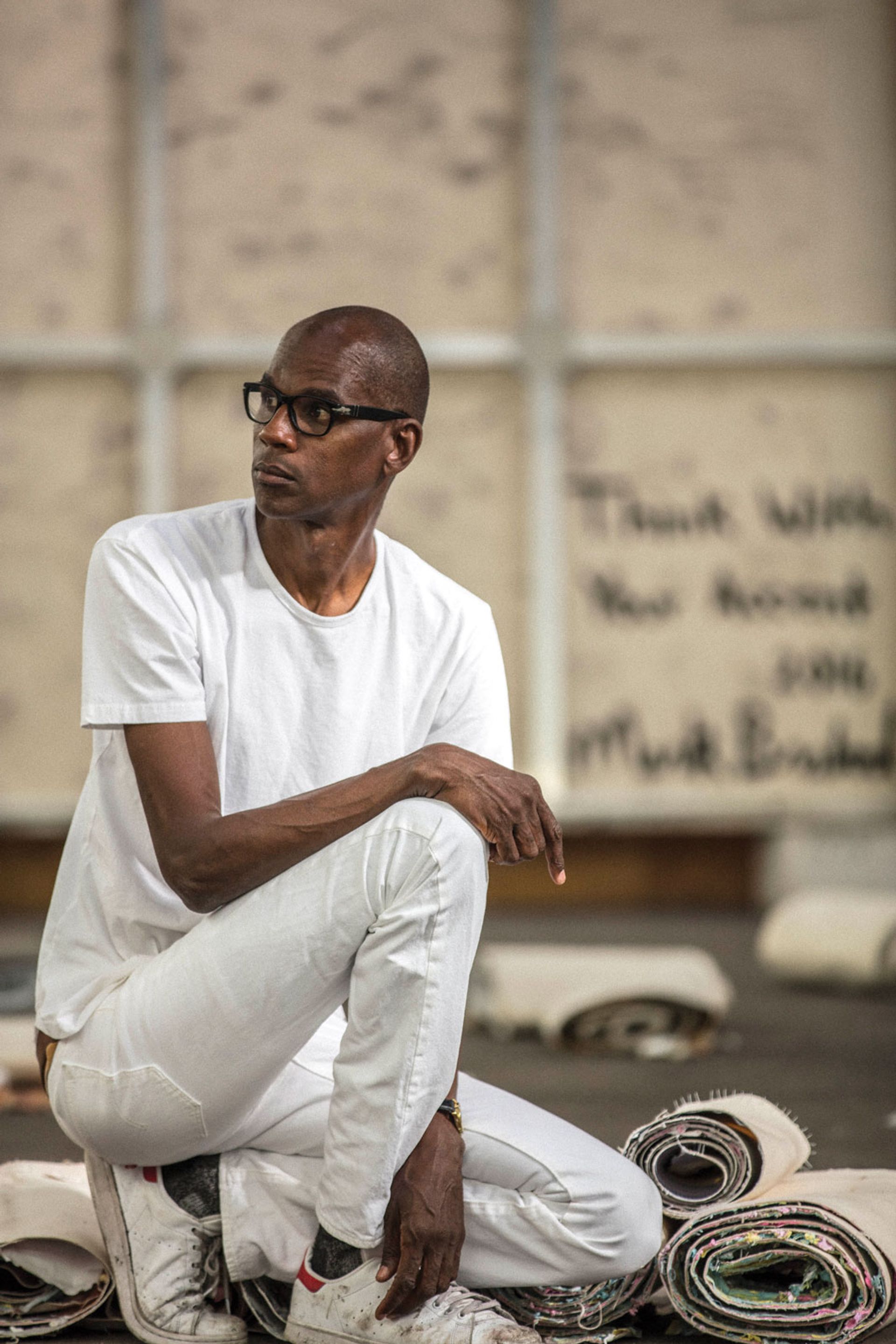
Mark Bradford’s popularity in Asia has grown since his 2015 Shanghai exhibition Mark Bradford, Courtesy the artist and Hauser & Wirth; Photo: Sean Shim-Boyle
Mark Bradford
Hauser & Wirth, 15th-16th Floor, H Queen’s, 80 Queen’s Road Central
Until 12 May
Fresh off the back of his successful US pavilion at the Venice Biennale last year and a series of solo shows in Boston, Baltimore and Washington DC, Mark Bradford is taking on the inaugural exhibition at Hauser & Wirth’s new 10,000 sq. ft Hong Kong gallery with a series of new paintings. The gallery’s co-president Iwan Wirth says there has been “enormous appetite” for Bradford’s work both institutionally and from private collectors in Asia ever since his Tears of a Tree exhibition at Rockbund Art Museum, Shanghai, in 2015. “To choose one of the most successful and important living artists to inaugurate our first space in Asia underlines the seriousness with which we are taking this step,” he says.
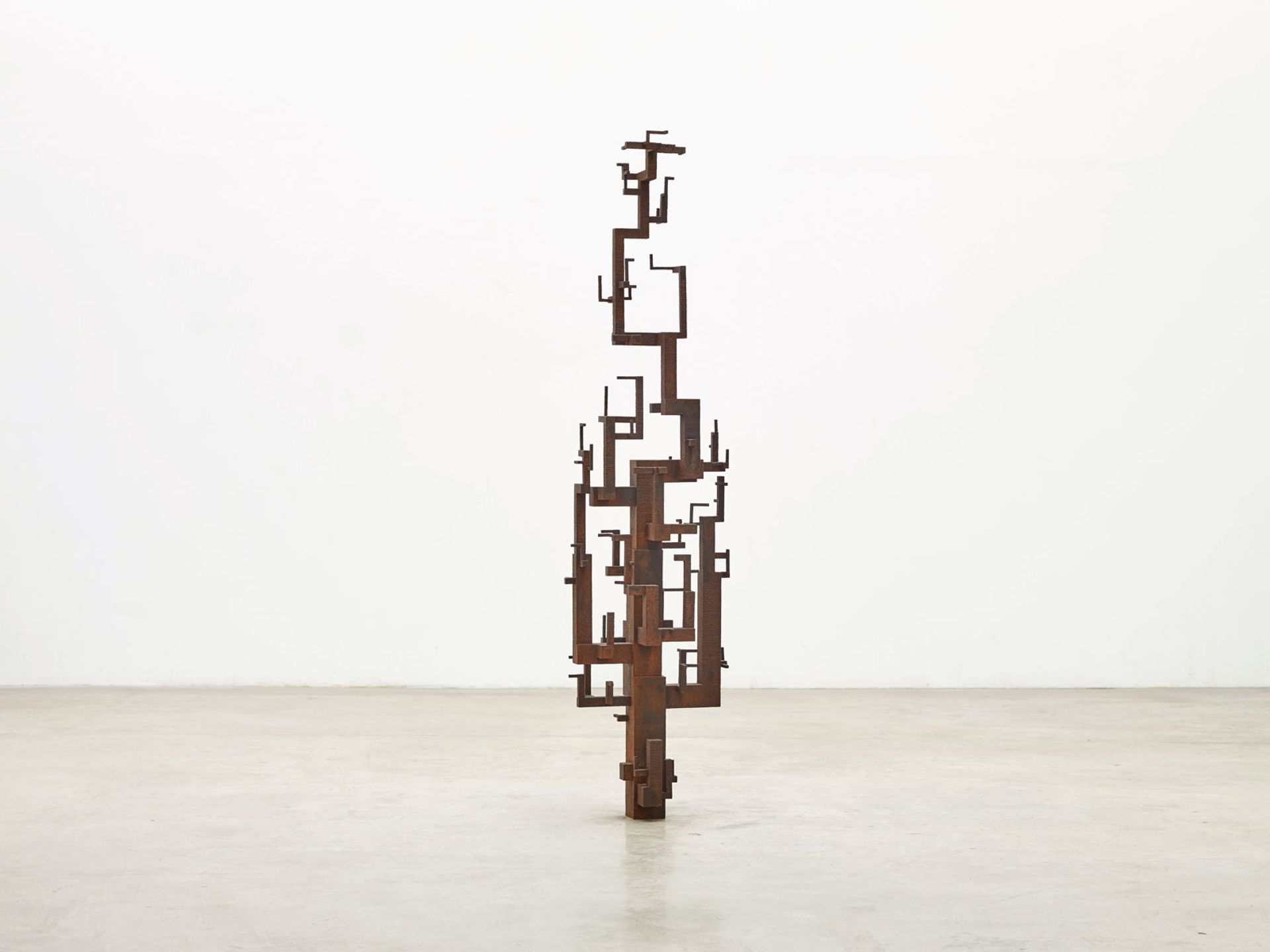
ROOT (2016), from Antony Gormley’s latest series of works, which is inspired by Goethe Antony Gormley; Photo: Stephen White
Antony Gormley: Rooting the Synapse
White Cube, 50 Connaught Road Central
Until 19 May
Branching out from his instantly recognisable realistic sculptures of the human body, Antony Gormley’s second show in Hong Kong introduces a new nature-driven aesthetic. The iron structures in his Rooter series take inspiration from the German writer and naturalist Johann Wolfgang von Goethe’s anatomic analogy between the body and a tree “planted in the sky”, a statement says. However, the intricate statues—which combine the imagery of torsos and limbs with the wild roots and branches of a tree—feature geometric angles at odds with the naturalistic ideas behind the work. Gormley, whose work is also on show as part of Hong Kong’s first Harbour Arts Sculpture Park, will discuss his work at the panel discussion Bodies in Practice: On Figures and Figuration (Thursday 29 March, 1pm-2pm).
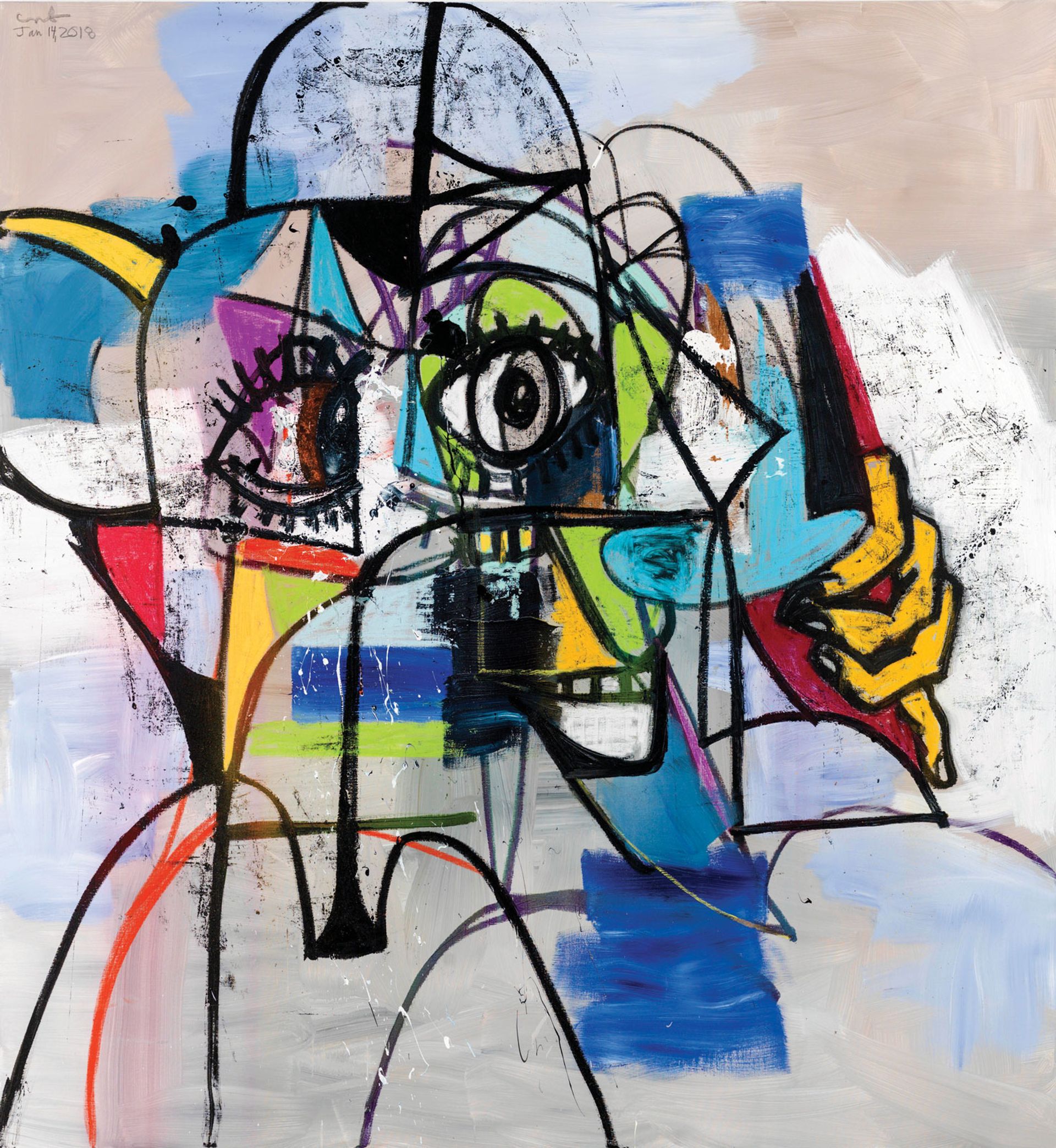
Laughing and Screaming (2017), one of George Condo’s new works on show at the Hong Kong Maritime Museum. George Condo/ARS; Courtesy the artist, Skarstedt and Sprüth Magers
George Condo: Expanded Portrait Compositions
Hong Kong Maritime Museum, Central Pier No. 8
Until 6 April
The US artist George Condo is showing his psychological portraits in Hong Kong for the first time this month. In collaboration with the galleries that represent him, Skarstedt and Sprüth Magers, the Hong Kong Maritime Museum presents a new body of work of eight paintings and five works on paper, which offer an insight both into the mind of the artist and the human psyche at large. Condo has described the fragmented, contorted faces he depicts as “psychological cubism”. Fittingly, his works are paired across town with portraits by the master of Cubism, Pablo Picasso, in a selling show at Sotheby’s S|2 Gallery (Face-Off: Picasso/Condo, until 31 March).

The Hong Kong Federation of Trade Unions Choir perform We are the World in Samson Young’s installation Simon Vogel
Samson Young: Songs for Disaster Relief World Tour
M+ Pavilion, West Kowloon
Until 6 May
Visitors to the M+ show, an expanded version of Young’s Hong Kong pavilion at the Venice Biennale last year, can enter Gundane’s cosy palazzo, complete with 1970s-style sofas, soft curtains and mood lighting. But the character, embodied by Young’s German collaborator Michael Schiefel, also has a sinister presence. The feeling of unease and ambiguity runs throughout the exhibition. The public programme will culminate on 21 April in an event making new music out of cover songs with the concertmaster of the Hong Kong Sinfonietta, James Cuddeford. After charity singles, could the maligned genre be Young’s next sonic obsession?
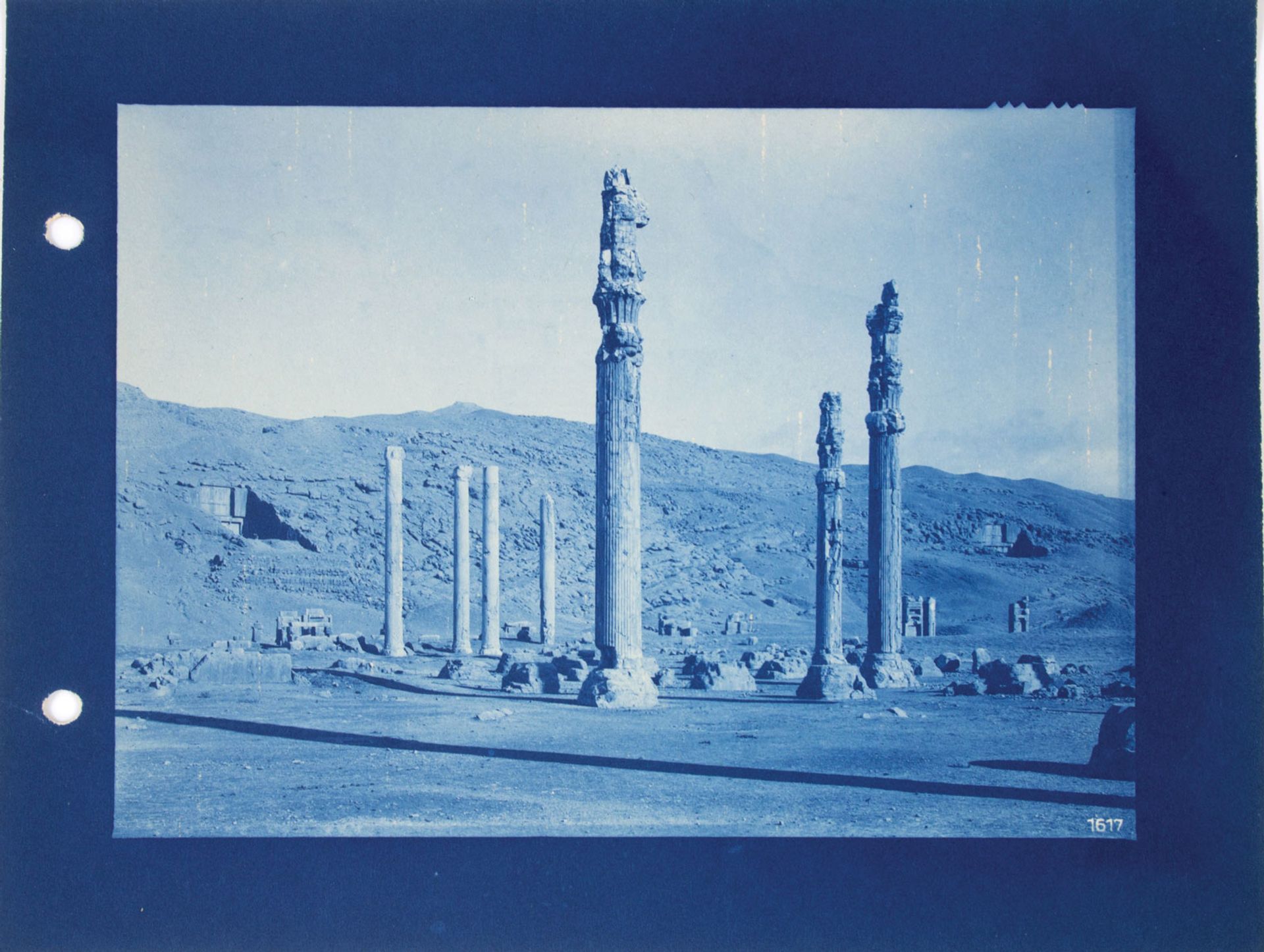
An early photo of Persepolis Smithsonian Institution, Washington DC
The Blue Road: Mastercrafts from Persia
Liang Yi Museum, 181-199 Hollywood Road, Sheung Wan
Until 24 June
Iranian art is on the agenda this week in Hong Kong. Iran will be represented for the first time at Art Basel in Hong Kong with the Tehran-based gallery Dastan’s Basement among the 249 participating galleries. Meanwhile, The Blue Road: Mastercrafts from Persia at the privately run Liang Yi Museum is, the exhibition organisers say, the largest show ever to be held in Hong Kong of Persian decorative objects. The exhibition includes 94 artefacts that illuminate the significance of the colour blue in the visual and material culture of Iran. The sources of the Persian blue pigment used to adorn objects are explored, including cobalt ore which was utilised until the late Middle Ages. Ceramics, glassware, textiles, paintings and manuscripts dating from the 16th century to today are displayed across six sections.


